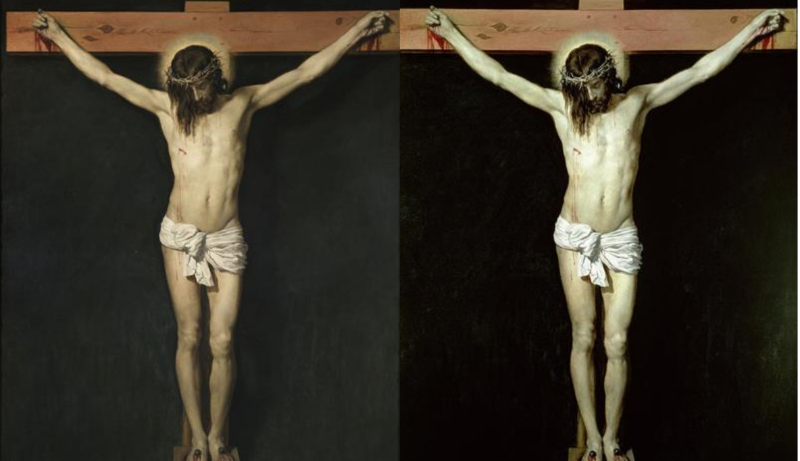Diego Velázquez painted Christ Crucified in 1632 to depict the Crucifixion of Jesus. The oil-on-canvas piece, which is 249 x 170 cm in size, belongs to the Museo del Prado.
About Diego Velazquez
Velázquez created several nudist studies while he was in Rome, which he eventually used in works like Apollo at the Forge of Vulcan (1630) and Joseph’s Tunic (1630). The naked study for this painting is said to be extraordinary and artistic in its blending of tranquility, dignity, and nobility, according to art critics. It is a life-size frontal nude that lacks the backdrop of a story.
Christ on the Cross painting
In the 17th century, Velázquez used the conventional iconography. The crucified Christ was depicted by his master, Francisco Pacheco, a strong proponent of classical painting, employing the same iconography that Velázquez later used: four nails, feet together, supported on a small wooden brace, in the classic contrapposto position. Instead of forming a triangle, both arms gently curve. In order to expose as much of the naked body as possible, the loincloth is painted fairly small. The face is lying on the chest, revealing just enough of his features, and the head displays a thin halo that appears to have originated from the figure itself.
The large portion of the face that is covered by the long, straight hair suggests that death has already been inflicted, as evidenced by the wound on the right side. It lacks the dramatic elements that define baroque painting.
The date of the painting is unknown due to a lack of information. But scholars concur that the piece was created following Velázquez’s return from Italy, most likely between 1631 and 1632.
The reclining head, idealized face, and peaceful body stance all reflect the influence of Classicist art. On the other hand, the intense chiaroscuro between the background and the torso and the strong, artificial lighting over the cross both exhibit Caravaggism.
Most likely, it was a commission for the sacristy of the San Plácido Convent. The artwork was one of Manuel Godoy’s confiscated possessions, but it was given back to Mara Teresa de Borbón, the 15th Countess of Chinchón. The painting was given to King Fernando VII by her brother-in-law, the Duke of San Fernando de Quiroga, when she passed away. The painting was later delivered to the Museo del Prado by the king.
Numerous religious writings have been influenced by the mysticism and mystique of this artwork, most notably the poem El Cristo de Velázquez by the Spanish writer and philosopher Miguel de Unamuno.











